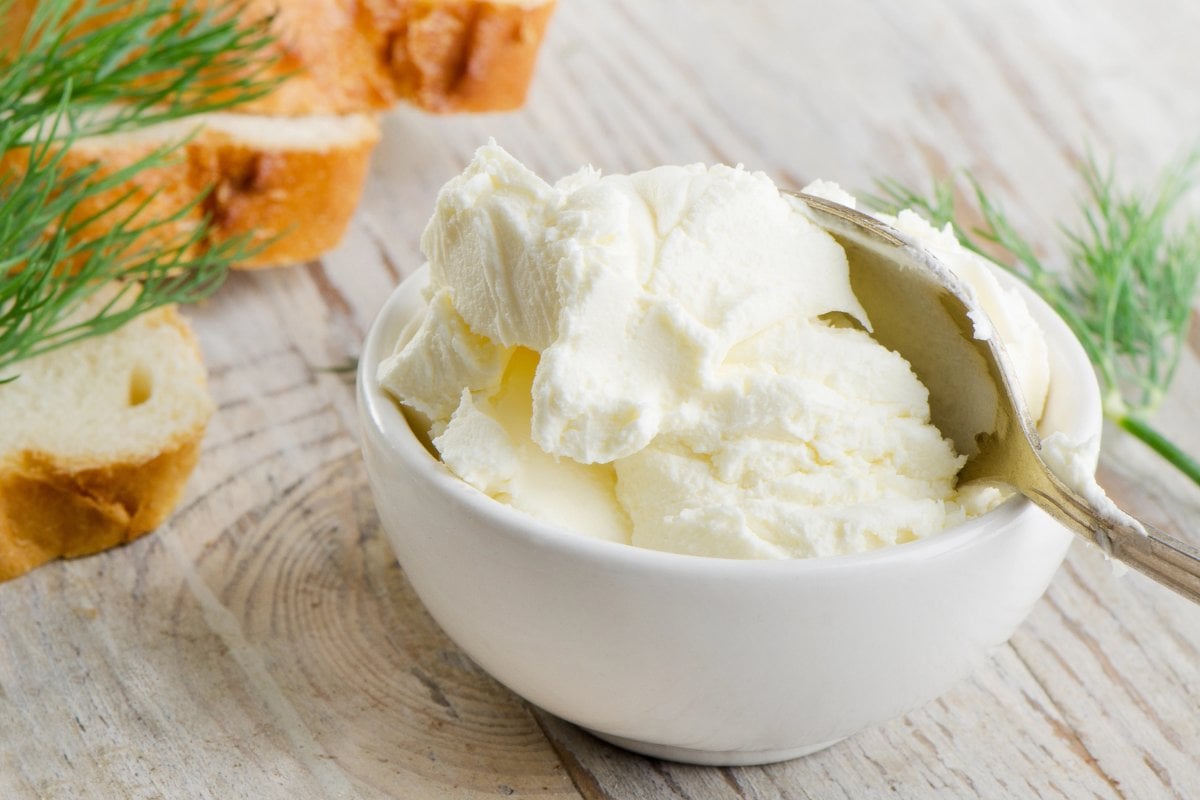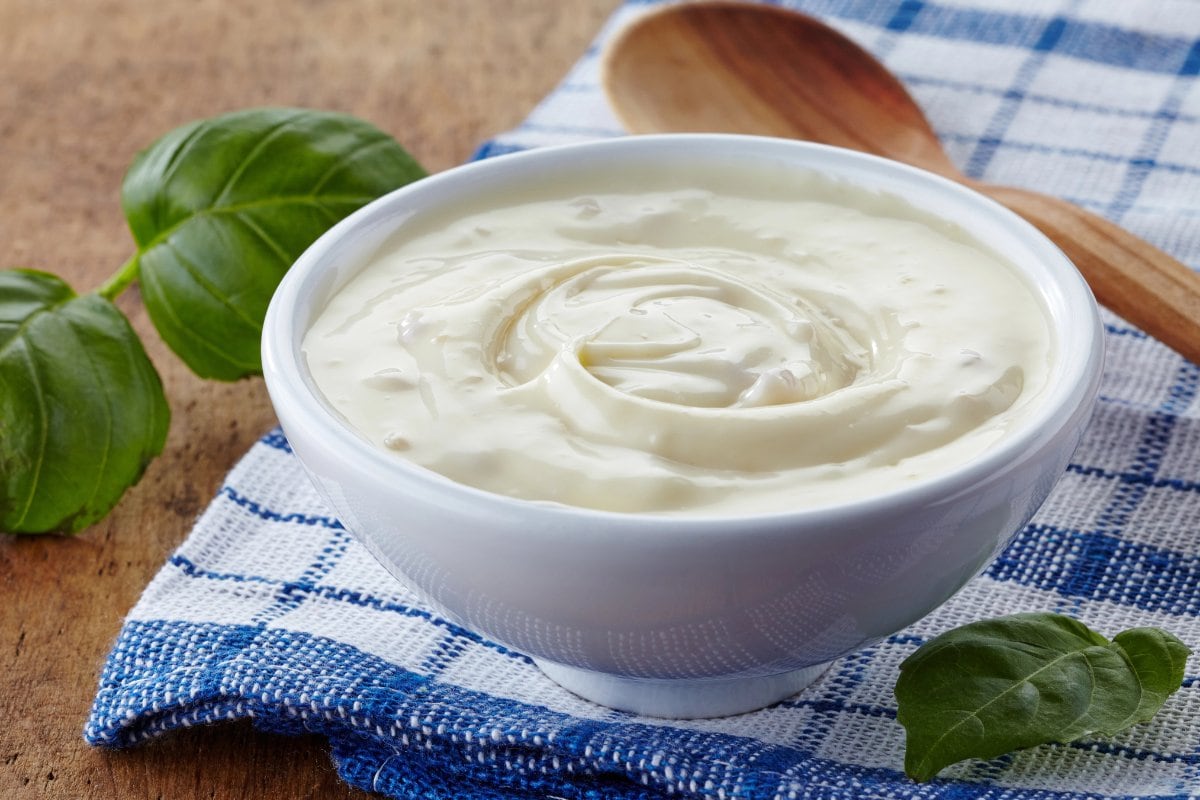Is Cream Cheese Gluten Free?
Is cream cheese gluten-free? YES, cream cheese is naturally gluten-free. Its primary components include milk and cream, added with natural cheese cultures, salt, and sometimes stabilizers like carob bean gum.

However, while plain cream cheese should be safe for a gluten-free diet, vigilance is paramount. Cross-contamination can occur during manufacturing, and some flavored or low-fat varieties may include additives that contain gluten. Understanding how to navigate food labels and being aware of gluten-free certification can help ensure that the cream cheese you choose meets your dietary needs.
What Is Cream Cheese?
Cream cheese is a soft, mild-tasting cheese that starts with the basic ingredients of milk and cream. During production, the milk is pasteurized to ensure safety, and then lactic acid bacteria or cheese cultures are added, which help to give cream cheese its unique flavor and texture.
Here’s a quick rundown of cream cheese characteristics:
- Texture: Creamy and spreadable
- Flavor: Mild and slightly tangy
- Fat Content: High, which contributes to both taste and texture
As for nutritional content, cream cheese contains a significant amount of fat, due to being made from milk and cream. However, it also provides you with a source of protein.

How Is Cream Cheese Made?
The process begins with pasteurization, where the milk and cream are heated to eliminate bacteria. Lactic acid bacteria culture is added to the mixture to begin fermentation. This step is where the milk begins to curdle.
Rennet, an enzyme, might also be introduced to encourage the curdling process. After a period, the curds and whey will separate. Next, the whey is strained, leaving behind the soft curds which form the basis of cream cheese.
At this point, the cheese is heated and stabilizers such as carob bean gum or guar gum are added to give it a firmer texture and prolong shelf life. Salt is added for flavor and the cream cheese is rapidly cooled to stop the fermentation process.
Lastly, the cheese is packaged in tubs, blocks, or other formats, and then chilled until it’s firm. If the cream cheese is labeled pure or natural, that means it consists of the basic components, making it a safe addition to a gluten-free diet.

Understanding Gluten and Its Effects
Gluten plays a significant role in the diets of many, yet it can cause adverse health effects for those with celiac disease or gluten sensitivity. Understanding its impact on the body and where it may lurk unexpectedly is crucial for maintaining a gluten-free diet.
What Is Gluten and Its Effects on the Body
Gluten is a protein found primarily in wheat, barley, rye, and, to a lesser extent, oats due to potential cross-contamination during processing.
When you suffer from celiac disease, ingesting gluten triggers an immune response that damages the small intestine, leading to inflammation and an impaired ability to absorb nutrients. Symptoms of this autoimmune disorder are diverse, affecting multiple systems of the body.
Those with non-celiac gluten sensitivity still experience symptoms like abdominal pain and headaches when consuming gluten. It’s essential to distinguish this from gluten intolerance, which generally refers to the broader range of negative reactions to gluten and can include both celiac disease and non-celiac gluten sensitivity.
Ingredients That Represent a Hidden Source of Gluten
Gluten can be hidden in a variety of ingredients, some of which might come as a surprise. Below is a list of common items that could unknowingly contain gluten:
- Modified food starch and maltodextrin: When derived from wheat, these can be problematic.
- Natural and artificial flavors: Can be based on wheat, barley, rye, or their derivatives.
- Malt: Derived from barley and found in various products, including some breakfast cereals.
- Stabilizers or thickeners: Can be derived from gluten-containing grains.
Always read the label to check for these ingredients and for any mention of wheat, barley, rye, or their derivatives, which are indicators of gluten. Additionally, watch for any statements about shared manufacturing facilities or equipment, which can increase the risk of cross-contamination.

How to Identify Gluten-Free Cream Cheese
When searching for gluten-free cream cheese, carefully reading the labels is key. Focus on the list of ingredients to ensure no gluten-containing elements are included. Here’s a simplified approach:
- Look for a Gluten-Free Label: Many products will have a certification or label indicating they are gluten-free. This is your quickest indication that the cream cheese is safe for a gluten-free diet.
- Check the Ingredients: If there’s no gluten-free label, scrutinize the ingredients. Cream cheese should primarily contain milk and cream. Avoid additives derived from wheat, barley, or rye, which are common gluten sources.
- Beware of Cross-Contamination: Even if the ingredients are gluten-free, cream cheese could be contaminated if processed on shared equipment with gluten-containing products. Look for statements about shared facilities or equipment.
- Research the Brand: Some brands, such as Kite Hill and Tofutti, offer unique products designed to cater to multiple dietary restrictions, including being gluten-free, as well as vegan and dairy-free.
| Steps | What to Look For |
|---|---|
| 1 | Gluten-Free Label |
| 2 | Ingredients: milk and cream, no wheat additives |
| 3 | Statements about shared facilities/equipment |

Top 10 Gluten-Free Cream Cheese Brands
When you’re following a gluten-free diet, it’s essential to select cream cheese brands that guarantee a gluten-free product. Below is a concise list of the top 10 gluten-free cream cheese brands:
- Kite Hill Dairy-Free Cream Cheese
- Prairie Farms Original Cream Cheese
- Lucerne Cream Cheese
- Daiya Foods Plant-based Cream Cheese
- Crystal Farms Original Cream Cheese
- Nancy’s Organic Cream Cheese
- GO VEGGIE Plant-Based Classic Plain Cream Cheese
- Tofutti Vegan Cream Cheese
- Organic Valley Cream Cheese
- Great Value Cream Cheese
Frequently Asked Questions
When considering whether cream cheese products are gluten-free, you may have specific questions about brands, flavorings, and additives. Here are straightforward answers to common inquiries.
Are there any brands of cream cheese that contain gluten?
Most mainstream cream cheese brands, including popular brands like Philadelphia, are gluten-free. However, always check the labels as formulations can change.
Does flavoring in cream cheese affect its gluten status?
Flavorings can potentially introduce gluten to cream cheese. Read the ingredient list meticulously if flavorings are included, to ensure they are safe for a gluten-free diet.
Is cream cheese often made with gluten-containing additives?
Cream cheese is usually a simple product with few ingredients and does not commonly contain gluten. However, cross-contamination or certain additives could be an issue, so make sure to review ingredients and manufacturing processes.

